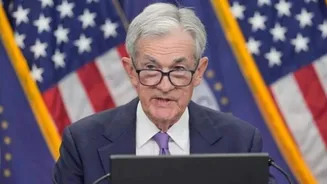Market Dip Explained
The gold market has seen a dip recently, causing quite a stir among investors. Multiple factors are at play, contributing to this downward trend. Experts
indicate that global economic factors are significantly influencing gold prices, with decisions made by central banks and changes in currency values playing a crucial role. Furthermore, shifts in investor sentiment and changes in demand for safe-haven assets also have an impact on the value of gold. A comprehensive analysis of these elements can help individuals understand the current market dynamics better and make informed decisions about their investments and purchases.
Key Influencing Factors
Several key factors contribute to the fluctuation in gold prices. Economic indicators, like inflation rates and interest rate adjustments by global central banks, greatly affect gold's value. When interest rates increase, the appeal of gold, which doesn't offer any return, may diminish. Besides, the strength of the US dollar often has an inverse relationship with gold prices; a robust dollar can weaken gold's value, and vice versa. Investor behavior also has a considerable impact, as periods of increased risk aversion typically cause a rise in gold prices, while times of economic confidence may lead to a price decline. These elements together form the complex interplay that shapes the gold market.
Impact on Consumers
The price fluctuations in the gold market have a direct impact on consumers, particularly those interested in buying jewellery or making gold investments. A decline in gold prices is generally welcomed by buyers, making gold jewellery and bullion more affordable. This can lead to a rise in consumer demand, boosting the jewellery retail sector. On the flip side, investors who already possess gold may see a temporary reduction in the value of their holdings. Still, gold's status as a traditional safe-haven asset can offer a hedge against economic uncertainty, thereby maintaining its appeal as a long-term investment option for many.
Looking Ahead
Predicting the future of gold prices involves considering multiple factors and global economic trends. Analysts regularly track economic indicators, like inflation, interest rates, and currency values, to forecast market movements. Geopolitical events and changes in investor sentiment also play vital roles in shaping gold's trajectory. Many experts provide predictions and updates, often taking a long-term view that takes into account the different market influencing factors. To stay ahead, investors and consumers should monitor these elements, seek advice from financial professionals, and make decisions based on their financial goals and risk tolerance, especially in periods marked by volatility.












